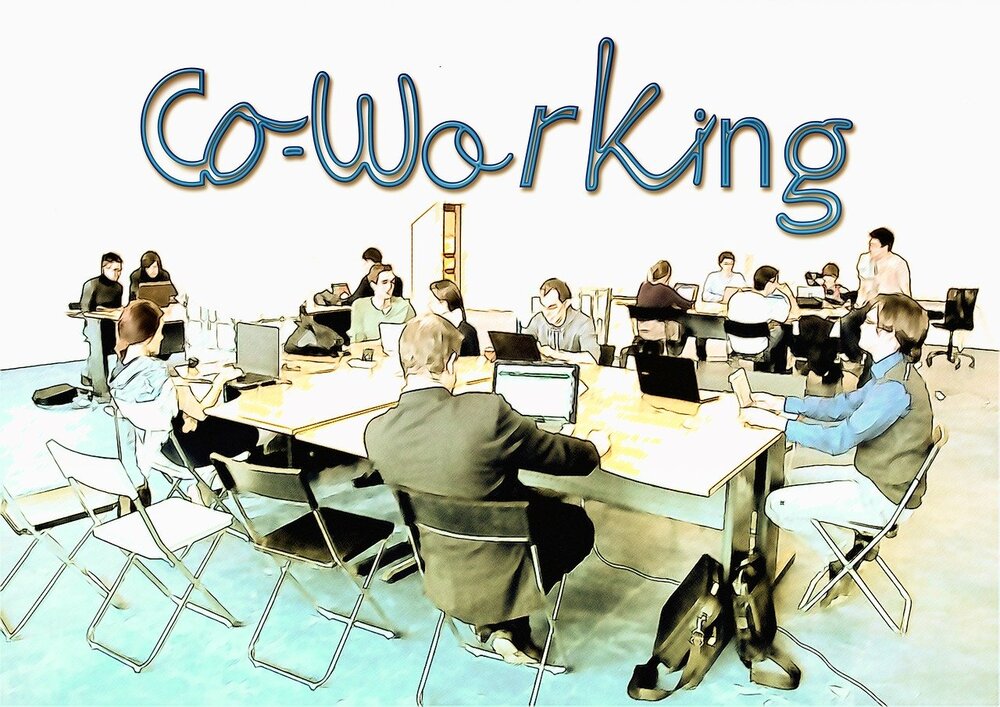It might seem daunting, time consuming & prohibitive for smaller practices, to implement BIM. Not with Driving Vision!
This article is part of a blog series on the labor shortage in the construction industry. To overcome the labor shortage, the industry must automate its processes and use various technologies to boost efficiency, strengthen employee retention, attract the younger generation, and make recruitment attractive by offering competitive wages and benefits.
The construction industry is still thinking in an old way, The sector is dominated by white aging males, not accepting that other types of people could do the job as well as they do. These issues create a hostile environment, so minorities are not welcomed or respected.
This is exacerbated by the shortage of skills as the old generation is retiring, and it is difficult to replace them with a younger generation or minorities. Solving this problem, requires more marketing in schools and colleges, having construction professionals visit classrooms to explain the digital transformation the industry is going through, and providing students with greater awareness of the variety of high-tech construction jobs available today.
Some software companies like Plannerly are offering free licenses, to students. Many firms donate hardware and software tools to give students practical, firsthand experience.
The various associations of the construction industry should relay the message that construction careers, which were believed to be “essential” during the pandemic, are more secure than other industries that suffered economically due to the COVID-19 pandemic.
Training from Unions should be offered to workers on recent technologies to enhance learning through their union certifications. What is the Future like? Building materials and labor costs increased significantly due to shortages and supply chain disruptions.
Now, emerging technologies are a good match for construction. Government and industry can put measures in place to reconstruct the pool of labor talent to secure the construction future.
Various governments worldwide, because of the pandemic, have decided to invest in infrastructure and new homes. This certainly will help show that the industry has changed and is a wonderful place to work, with plenty of new job opportunities where many technical innovations are happening.
It will give young people more reason to join the industry workforce. The spread of COVID-19 and efforts to limit its effect on the population had a substantial impact on construction activity and employment. Construction spending is rising, but employment is falling, highlighting the need for more recruitment.
Here are the factors contributing to this plain contradiction:
Building materials and labor costs increased significantly due to shortages and supply chain disruptions. This made residential construction grow quicker than other segments, driving higher prices.
More automation has been introduced in processes to compensate for the reduction in labor supply, cutting repetitive and dangerous tasks, making the industry safer. Automation and collaboration made the scheduling and logistics of building materials' delivery less cumbersome. All this is making the industry, more attractive for young talent.
The increased use of prefabrication and modularization requires different and less skilled workers and provides a better environment for them, as they are independent of the weather conditions.
A decrease in the number of smaller, less efficient construction companies going out of business, made the industry more technically savvy, productive, and more attractive for new workers.
The employee turnover rate in the construction industry hovers around 20% worldwide. Unfortunately, employee turnover for the 24 or younger bracket can get as high as 65%. Employee turnover refers to the proportion of employees who leave an organization over a set period (often on a year-on-year basis), expressed as a percentage of total workforce numbers.
Turnover costs a lot of money. It varies according to the performance level of the individual doing the job. Turnover is not always bad, though. If a poor performer is leaving the company, it could be considered a benefit, as the cost of replacing him or her would be lower than if she or he was staying. Your employee retention policies should be designed to retain talent and encourage poor performers to leave.
The reasons for staying or leaving organizations deal with emotions and human issues, so designing the right retention policies cannot be done scientifically. Each organization needs to decide what their acceptable voluntary turnover targets are and what categories of people they need to keep improving their efficiency and profitability.
We already said that hiring is costly:
For construction companies, losing a highly skilled worker or a top engineer in the middle of a project can be devastating. It can derail months of work and cause interminable headaches. The pandemic created a situation where the construction industry has many open positions and a limited labor pool to fill those positions. Firms must think innovatively to prevent their valuable personnel from finding greener pastures in a different company.

To design your retention policies, use the acronym BAITS: B- benefits A- applications I- instruction T- technology S- safety
In the current situation where employees can easily switch companies, making your employees dependable and loyal to you is critical.
Ensure you differentiate yourself from other employers, offering your employees benefits that make positive contributions to their personal lives.
On top of decent salaries, if you care about your staff, they will hesitate to look somewhere else. Please keep in mind that they work for you, not because they like the job, but because they need to provide for their families. If you help them achieve that, you will engender trust.
Everyone offers basic benefits! Offer more, and your employees will remain dutiful to you.
Automating your processes makes your employees feel that their workday is struggle-free; this is a wonderful way to retain them.
People are leaving their jobs because they are frustrated. If the right applications and management software are available to your team, irritation will be alleviated. Management applications and software are collaborative tools that can help intensify productivity and efficiency. Projects get completed quicker with fewer and happier people.
Using management construction software makes it easier for employees to share plans, scopes, contracts, tasks, schedules, and verify requirements during the design phase. Plannerly is a great platform.
During the construction phase, using a platform like Procore, allows your teams to discuss and share models and schedules, review blueprints, budget, profiles of subcontractors, send images, documents, and communicate with each other.
Your employees will have access from anywhere, at any time, to all critical information to conduct their tasks easily, collaboratively, and securely. You will kill two birds with one stone, reducing the nuisance of the day-to-day miscommunication and increasing productivity. It is a win-win, as your profitability will go up and your employees will remain loyal to you.
To keep your employees for the long term, provide them with career plans and development opportunities. In other words, not only offering them a job but also a career. To achieve that, create a system of progression through continuous learning, and encourage your employees to make the most of it.
To increase productivity and retain staff, provide them with training and learning opportunities.
Automate and systemize your processes, so your employees will use modern technologies as an opportunity to pick up new skills, even if it means just learning to use a straightforward application to track their time and expenses. Their morale will be uplifted as they take part in the modernization of your procedures.
Allow your staff the opportunity to upskill, providing them with access to knowledge, they become more confident, productive, and happier to work for your company. In fact, by providing them with various skills they can use in their work, you also give them the opportunity to become effective and to progress laterally or vertically alongside a track that gives them the momentum to stay around.
Ensure they understand that your company is providing them with a future by learning, so they are not tempted to see if the grass is greener at another employer. Having them stay and grow helps them to keep their knowledge, their experience, and their loyalty. It also helps you to satisfy your customers and make more money.
Technology is evolving rapidly at aggressive rates. New products are introduced to the market daily, they were not even considered to be used in the construction industry a few years ago.
The signs of progress made thanks to BIM combined with Artificial Intelligence, Robotics, and Augmented Reality to name a few, have simplified and made boring tasks interesting, boosting the morale of the troops.
Robotics lets construction machinery such as diggers and dozers run autonomously. Much robotic equipment can replace specialized construction tasks, including welding, drilling, and bricklaying. Operating a robot helps enhance safety in the work environment and requires a new set of skills that your staff can learn and evolve.
Augmented reality (AR) will transform the ways people work, learn, play, shop, and connect with their environment. In architecture, engineering, and construction, AR is the integration of digital 3D models with real-world building sites. It is a communication tool that allows efficient collaboration blending design and construction teams in a combined virtual and real environment, creating a shared experience.
The process boosts employee productivity and loyalty, from design conceptualization to ongoing operations and maintenance, AR improves the company's profitability. It is a win-win solution.
Introducing technology in your services and processes becomes a strategy to enhance and grow your company. Work out with your employees on how to embrace the new possibilities it opens. Think out of the box, the world is moving forward, and there is no reason to stay stuck in the past.
In the construction industry, there is more physical labor and more possibility for injuries than in other industries.
Accidental injuries can happen if you are working in an office, but there is no comparison to falling off a roof, getting run over by a concrete truck, or getting electrocuted.
Providing your employees with better-than-average health care benefits can make an enormous difference to your staff loyalty.
To ensure the safety of your workforce, you may develop and enforce a strong employee safety program.
The program's adherence to health and safety rules reduces your risk and liability, it also proves that you have their welfare at heart. Everyone in the industry understands that health and safety rules are arduous and may be disproportionate, but they are effective and enhance your reputation when it comes to employee safety. That reputation is priceless, especially in an industry where accidents happen. Your employees will feel respected.
 The construction industry needs to develop leadership as a skill, so it needs to be learned, edged, trained, and developed. If you are not training your people in leadership, those skills will deteriorate.
You need to invest in all your people.
The construction industry needs to develop leadership as a skill, so it needs to be learned, edged, trained, and developed. If you are not training your people in leadership, those skills will deteriorate.
You need to invest in all your people.
Do not expect to get immediate results. Be patient. The return on investment will take time but will reap greater profit.
Investing in people is difficult as you cannot analyze it, you cannot quantify it. But I guarantee you will get a return on your investment in the end.
Figure out how to effectively invest in people to reduce your employee turnover, and you will have a strong competitive edge.
To make your people happy, you must hire and train the right people, offer an engaging, connected, and caring culture, and make your company more attractive to prospective employees and clients.
Project requirements can vary from client to client. Is your organization flexible enough to respond to their needs? Try our Organization Diagnostic
In this diagnostic, we evaluate your BIM capabilities. Is your culture compatible with the BIM philosophy? What investment is needed to make your company BIM Level 3, ready?
Implementing BIM can be daunting, but Driving Vision is here to help you at the pace you are comfortable with. Get started by getting in touch now
Of practices using BIM made positive ROI
Of practices using BIM improved health and safety
Of practices using BIM decreased errors and omission
Of practices using BIM enhanced their practice image
Of practices using BIM claimed less litigations
Of practices using BIM reduced rework
It might seem daunting, time consuming & prohibitive for smaller practices, to implement BIM. Not with Driving Vision!
